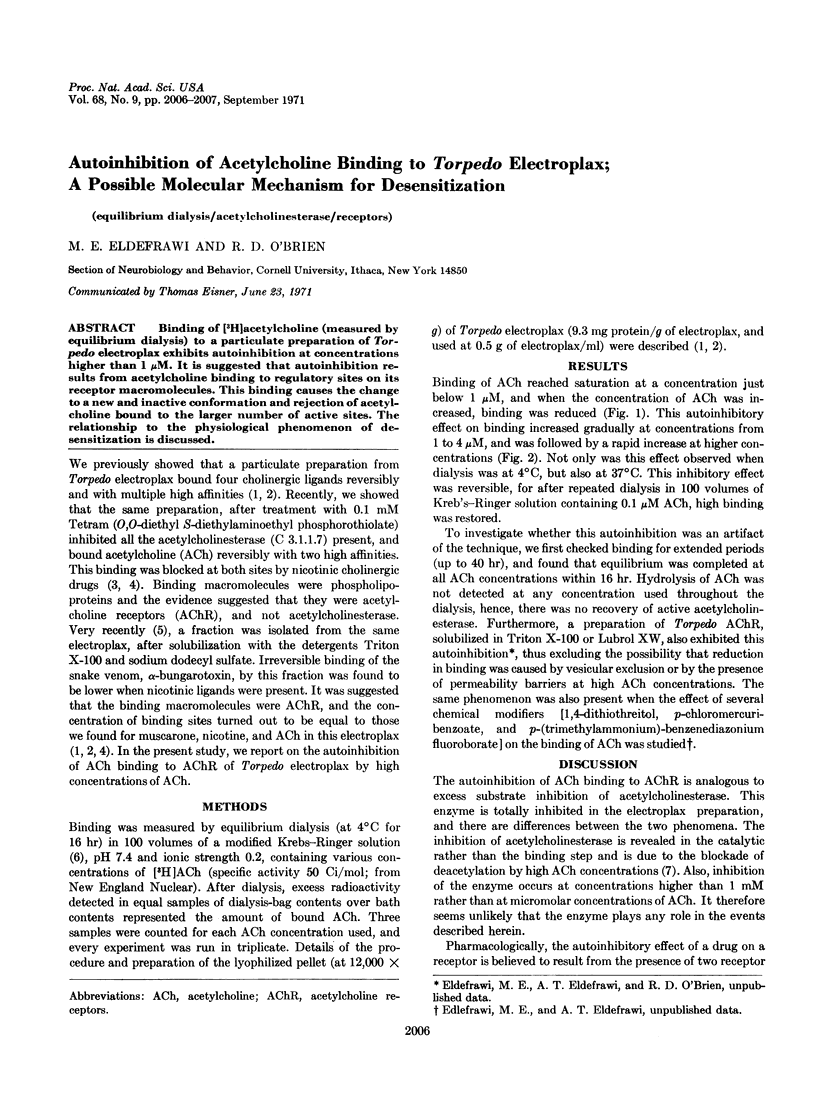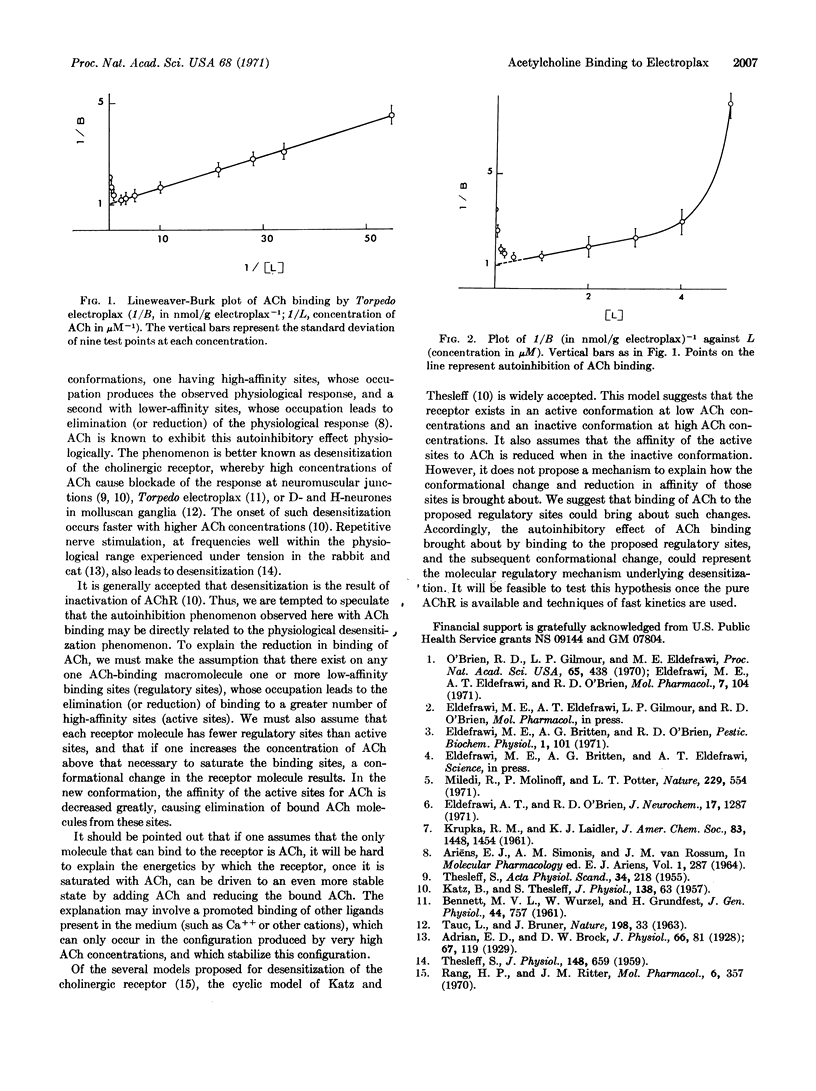Abstract
Binding of [3H]acetylcholine (measured by equilibrium dialysis) to a particulate preparation of Torpedo electroplax exhibits autoinhibition at concentrations higher than 1 μM. It is suggested that autoinhibition results from acetylcholine binding to regulatory sites on its receptor macromolecules. This binding causes the change to a new and inactive conformation and rejection of acetylcholine bound to the larger number of active sites. The relationship to the physiological phenomenon of desensitization is discussed.
Keywords: equilibrium dialysis, acetylcholinesterase, receptors
Full text
PDF

Selected References
These references are in PubMed. This may not be the complete list of references from this article.
- Adrian E. D., Bronk D. W. The discharge of impulses in motor nerve fibres: Part I. Impulses in single fibres of the phrenic nerve. J Physiol. 1928 Sep 18;66(1):81–101. doi: 10.1113/jphysiol.1928.sp002509. [DOI] [PMC free article] [PubMed] [Google Scholar]
- Eldefrawi A. T., O'Brien R. D. Binding of muscarone by extracts of housefly brain: relationship to receptors for acetylcholine. J Neurochem. 1970 Aug;17(8):1287–1293. doi: 10.1111/j.1471-4159.1970.tb03377.x. [DOI] [PubMed] [Google Scholar]
- Eldefrawi M. E., Eldefrawi A. T., O'Brien R. D. Binding of five cholinergic ligands to housefly brain and Torpedo electroplax. Relationship to acetylcholine receptors. Mol Pharmacol. 1971 Jan;7(1):104–110. [PubMed] [Google Scholar]
- KATZ B., THESLEFF S. A study of the desensitization produced by acetylcholine at the motor end-plate. J Physiol. 1957 Aug 29;138(1):63–80. doi: 10.1113/jphysiol.1957.sp005838. [DOI] [PMC free article] [PubMed] [Google Scholar]
- Miledi R., Molinoff P., Potter L. T. Isolation of the cholinergic receptor protein of Torpedo electric tissue. Nature. 1971 Feb 19;229(5286):554–557. doi: 10.1038/229554a0. [DOI] [PubMed] [Google Scholar]
- O'Brien R. D., Gilmour L. P., Eldefrawi M. E. A muscarone-binding material in electroplax and its relation to the acetylcholine receptor. II. Dialysis assay. Proc Natl Acad Sci U S A. 1970 Feb;65(2):438–445. doi: 10.1073/pnas.65.2.438. [DOI] [PMC free article] [PubMed] [Google Scholar]
- Rang H. P., Ritter J. M. On the mechanism of desensitization at cholinergic receptors. Mol Pharmacol. 1970 Jul;6(4):357–382. [PubMed] [Google Scholar]
- TAUC L., BRUNER J. "Desensitization" of cholinergic receptors by acetylcholine in molluscan central neurones. Nature. 1963 Apr 6;198:33–34. doi: 10.1038/198033a0. [DOI] [PubMed] [Google Scholar]
- THESLEFF S. Motor end-plate 'desensitization' by repetitive nerve stimuli. J Physiol. 1959 Oct;148:659–664. doi: 10.1113/jphysiol.1959.sp006314. [DOI] [PMC free article] [PubMed] [Google Scholar]
- THESLEFT S. The mode of neuromuscular block caused by acetylcholine, nicotine, decamethonium and succinylcholine. Acta Physiol Scand. 1955 Oct 27;34(2-3):218–231. doi: 10.1111/j.1748-1716.1955.tb01242.x. [DOI] [PubMed] [Google Scholar]


